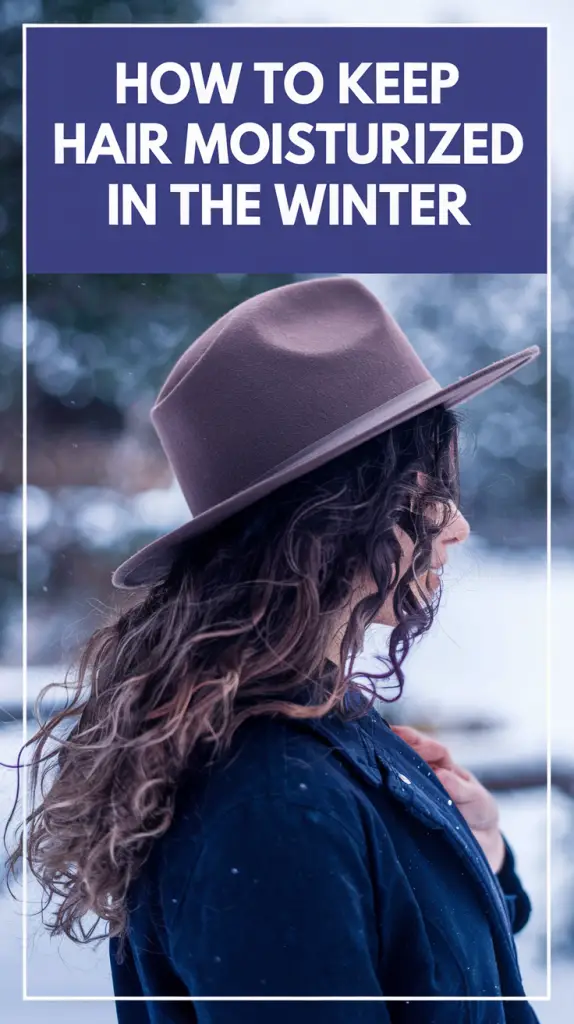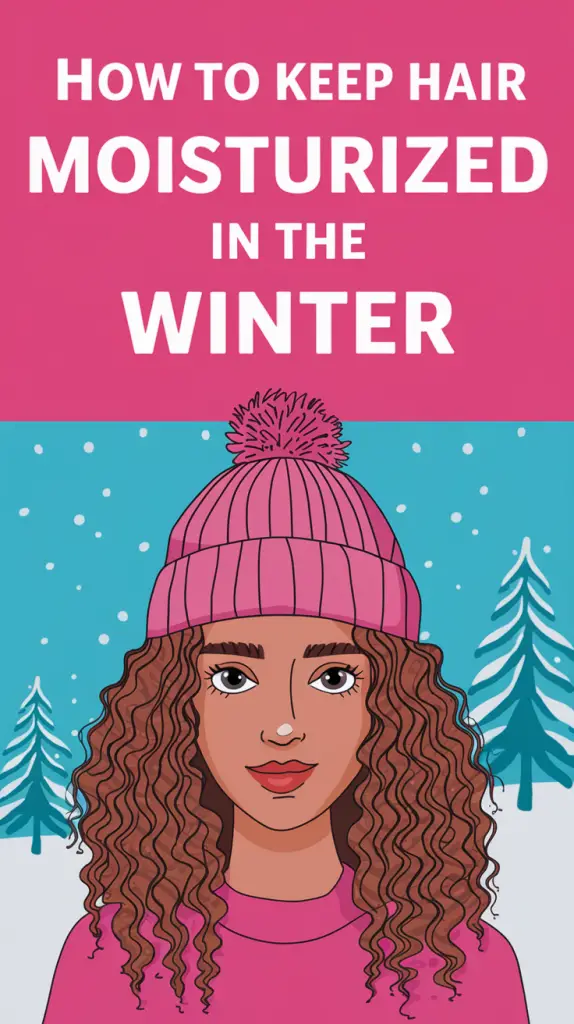How to Keep Hair Moisturized in the Winter
Winter can be tough on hair health. According to Collins, air conditioning can really take a toll on your hair, leaving it dry, split, and frizzy. After spending a long time dealing with this myself, I can tell you that moisturising your hair in winter needs a bit of a complex solution, including the right product, healthy habits and protective techniques. This article is one of the best ways to go about it. If you follow these tips, you can rock your hair in a stylish and bouncy style without worrying about any issues when you’re out and about in the snow. The article also has tips for keeping your hair smooth and shiny.
Switch to a Co-Wash or Hydrating Shampoo
One of the most common winter hair cleaning mistakes is using a harsh shampoo that strips away the hair’s natural lubricants. You might want to try using a co-wash (cleansing conditioner) or a hydrating, sulfate-free shampoo during the winter instead of your usual shampoo. Co-washing is a type of no-poo that doesn’t strip the hair of its oils. It’s the best option for curly, textured, or dry hair.
| Product Type | Ideal For | Benefit |
|---|---|---|
| Co-Wash | Dry, Curly Hair | Cleanses without stripping moisture |
| Hydrating Shampoo | All Hair Types | Provides gentle cleansing with added hydration |
| Deep Conditioner | Damaged Hair | Replenishes moisture and improves hair health |
Deep Conditioning and Hot Oil Treatments
Winter is the time of year when deep conditioning is the norm. If you treat your hair with a deep conditioner regularly, it’ll have the extra moisture it needs to fight off the drying effects of the cold weather. Try using natural oils like argan, coconut, and jojoba oil, which really sink into the hair shaft. If you’re looking for something a little more relaxing, you might also enjoy a hot oil treatment. It’s a great way to calm your scalp and condition your hair.
| Treatment Type | Key Ingredient | Benefit |
|---|---|---|
| Deep Conditioning Mask | Shea Butter, Argan Oil | Restores moisture, softens dry hair |
| Hot Oil Treatment | Coconut Oil | Adds shine, nourishes scalp and hair |
| Leave-in Conditioner | Jojoba Oil, Aloe Vera | Protects hair throughout the day, combats frizz |
If you want a more potent treatment, use the mask or oil and wrap a warm towel around your hair to help the product get into the roots more effectively.
Use a Humidifier Indoors
While staying hydrated with water is crucial for your inner system, it’s also important to consider the environment around you. The dry, heated, and oxygen-deprived environment inside homes and offices is similar to that outside. One way to do this is to use a humidifier to keep the air in your home or office comfortable and moisturized, especially in dry climates.
Pre-Poo Treatments for Extra Moisture
A pre-poo treatment is when you put some oils or a moisturizing conditioner in your hair and then wash it out. During the winter, when your hair might be more prone to damage, this practice is especially important because it makes your hair stronger and more resistant to shampooing. Pre-pooing helps your hair stay moisturized even during a shower, and it also helps you restyle your hair and manage it better.
How to Pre-Poo:
- Apply your favorite oil (coconut, olive, or avocado) to dry hair.
- Keep it as it is for 15 minutes.
- Carry on with your regular washing schedule as always.
By doing this additional step you can increase the moisture in your hair.
Limit Heat Styling
We all know how tempting it is to dry or straighten your hair with the help of blow dryers, flat irons, or curling irons. But these tools damage your hair by removing its natural moisture. Winter is a great time to try heat-free hairstyles like braids, buns, and even twists. They’re a great way to protect your hair and reduce split ends. If you have to use heat, put a heat protectant on first.
Reduce Heat Styling
While it might be tempting to style your hair with blow dryers, straighteners, or curling irons, these tools can actually strip moisture from your hair. Winter is the ideal time to try heat-free styles like braids, buns, or twists. They’re great for protecting your hair and reducing breakage. If you have to use heat, make sure you use a heat protectant product first.
Protect Your Hair with Satin or Silk
Wearing a hat is just one way to protect your head from the cold, but most hats are made from materials like wool or cotton, which can rub against your hair and cause breakage. So, it’s a good idea to look for hats that use satin or silk fabrics, as these help to reduce friction and keep your hair moisturised.
You might also want to try switching to a silk pillowcase at night or covering your hair with a satin scarf to help keep moisture in and frizz under control.

Hydrate from the Inside
Water is really important for our bodies, not just for our skin and hair, but for lots of other things too. It’s also important to stay hydrated from the inside out, as well as using external moisturizers. On top of that, eat a healthy diet that’s full of omega-3 fatty acids (found in foods like salmon, flaxseeds, and walnuts) to support and nourish your hair from the inside out.
| Nutrient | Found In | Hair Benefit |
|---|---|---|
| Omega-3 | Salmon, Flaxseeds, Walnuts | Improves scalp health, promotes shine |
| Vitamin A | Carrots, Spinach | Strengthens hair, promotes growth |
| Biotin | Eggs, Nuts | Prevents dryness, enhances hair strength |
Regular Trims to Remove Dry Ends
Winter is a real problem for split ends and breakage, and the same is true of summer because of the dry air and the use of scarves and hats. The trim technique lets your stylist even out the ends, usually every six to eight weeks. This helps get rid of damage from harsh weather and supplements and keeps your hair healthy.
Why trim in the winter? Dust can damage the hair cuticle, so it’s important to keep up with trimming. To keep your hair healthy and prevent split ends, you need to take care of it. You should trim your hair every six to eight weeks to get rid of unhealthy ends and make it look gorgeous and healthy.
Avoid Hot Showers
On top of being a great but intense experience for your body, hot water strips away natural oils from your hair and scalp, leaving these areas drier and more prone to damage. Instead of using hot water, which isn’t good for your hair and scalp, use lukewarm water. Instead, resist the urge and finish up with cool water to seal in the moisture and close off the cuticles.
Conclusion
Dehydrating the hair in winter is not just a problem for the hair, it involves using appropriate treatments apart from the products, finding hair security measures amidst bad weather and a healthy meal. Through these ideas-whether it’s using a humidifier indoor, deep conditioning regularly, or switching to a satin-lined hat-you are able to achieve not only a smoothly in a sometimes Fried-Time but a beautiful hair all over winter season.
FAQs
1. How often should I deep condition my hair in winter?
Once a week is plenty for deep conditioning to keep your hair moisturized during the winter.
2. What is the best oil to use for pre-poo treatments?
Coconut oil, avocado oil, and olive oil are great for pre-poo treatments because they really sink in and lock in moisture.
3. Can I still use heat styling tools during winter?
It’s a good idea to cut down on heat styling as much as you can during the winter. If you have to use heat, make sure you use a heat protectant spray to keep your hair from losing moisture.
4. Is it necessary to change my hair care routine in winter?
Yes, winter can be tough on hair. Adding more moisture-rich products to your routine and washing less often can help.
5. Can I make DIY hair masks at home for winter care?
Yes, you can make hair masks with ingredients like honey, avocado, and yogurt to keep your hair hydrated and healthy.

